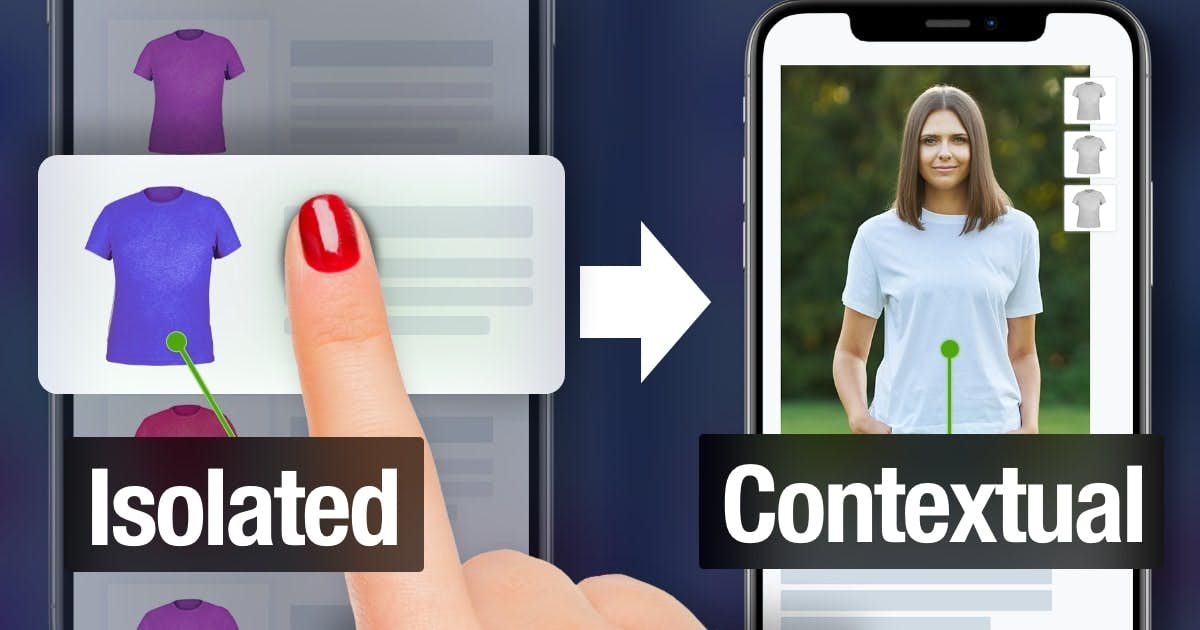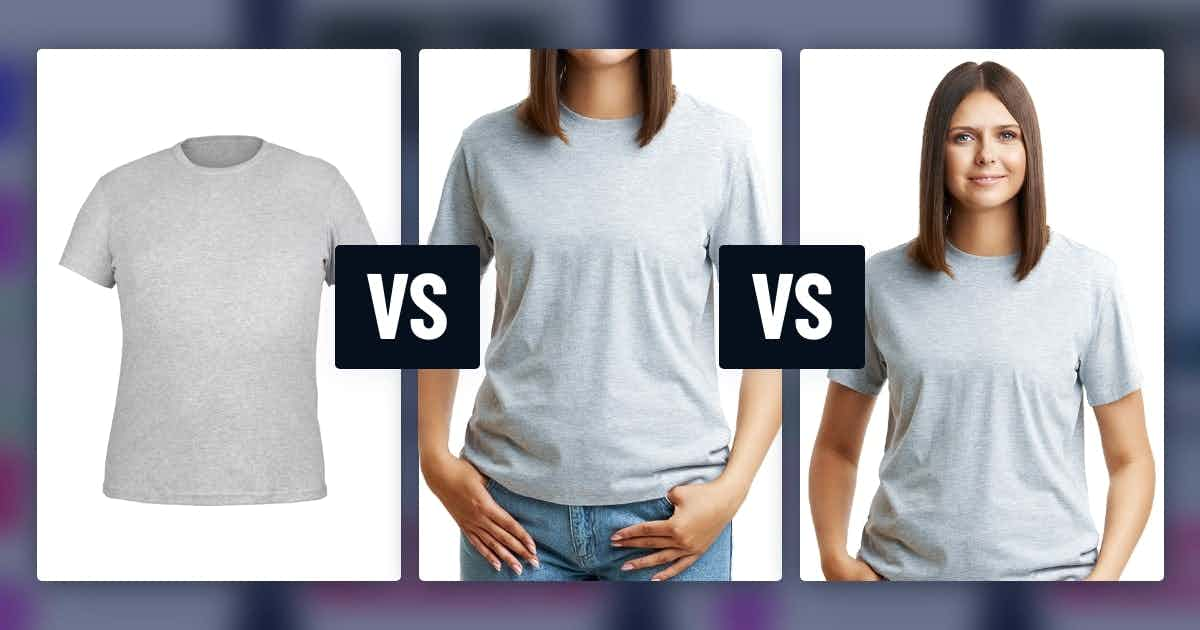Show an Isolated Product Before Contextual Imagery
Which types of product images perform best? Should you include people who are showcasing the product?

Overview
Researchers tested ecommerce images of clothing: isolated, headless, and human (Bagatini, Rech, Pacheco, & Nicolao, 2023).

In one study, they asked participants to choose their preferred shirt. Participants chose isolated shirts without humans.
In another study, they asked participants to rate their buying intention. Participants were more likely to buy shirts with humans
Why the difference? And how can you apply it?
My guess: Customers buy in two stages:
- Do I want to evaluate this product? If yes, they visit the product page.
- Do I want to buy this product? If yes, they add to cart.
These mindsets are different.
In the first stage, isolated photos perform better because they exclude peripheral information. By showing the product — and only the product — you ease comparisons with adjacent products. Customers are more likely to visit these pages because they predict an easier evaluation.
Once customers visit a page, contextual photos (e.g., humans using the product) perform better because customers can imagine buying and using these products. Researchers confirmed that contextual photos of shirts helped participants imagine wearing them.
Caveat: Show humans in product images if they help customers assess the quality of a product (e.g., beauty, apparel, jewelry). Otherwise, these images can reduce conversions because it feels like their product, not my product (Lu, Jung, & Peck, 2023).
Other New Studies
- Mizspelled Names Perform Worse - In my guide on brand names, I suggested modifying the spelling of a real word. But alas, I was wrong. Across 6 studies, this technique backfired for real brands (e.g., Lyft) and fake brands (e.g., Kool Cocktails, Daily Gainz, Klear, Kreative Designs). Misspelled names trigger persuasion knowledge. In other words, customers infer that marketers are trying to influence their behavior, so they resist this persuasion attempt (Costello, Walker, & Reczek, 2023).
- Nudging Down Sugar - University students drank less sugar with their coffee when a vending machine set the default at 0 (vs. 3; Priolo et al., 2023)
- People Are More Likely to Donate in Virtual Reality - They feel stronger emotions when they can see a vivid depiction of people who need help (Sooter & Ugazio, 2023).
- Anthropomorphism Increases Recycling Behavior - People empathize with humanlike products. When they need to dispose them, recycling feels more humane than throwing them away (Wu, Malter, & Johar, 2023).
